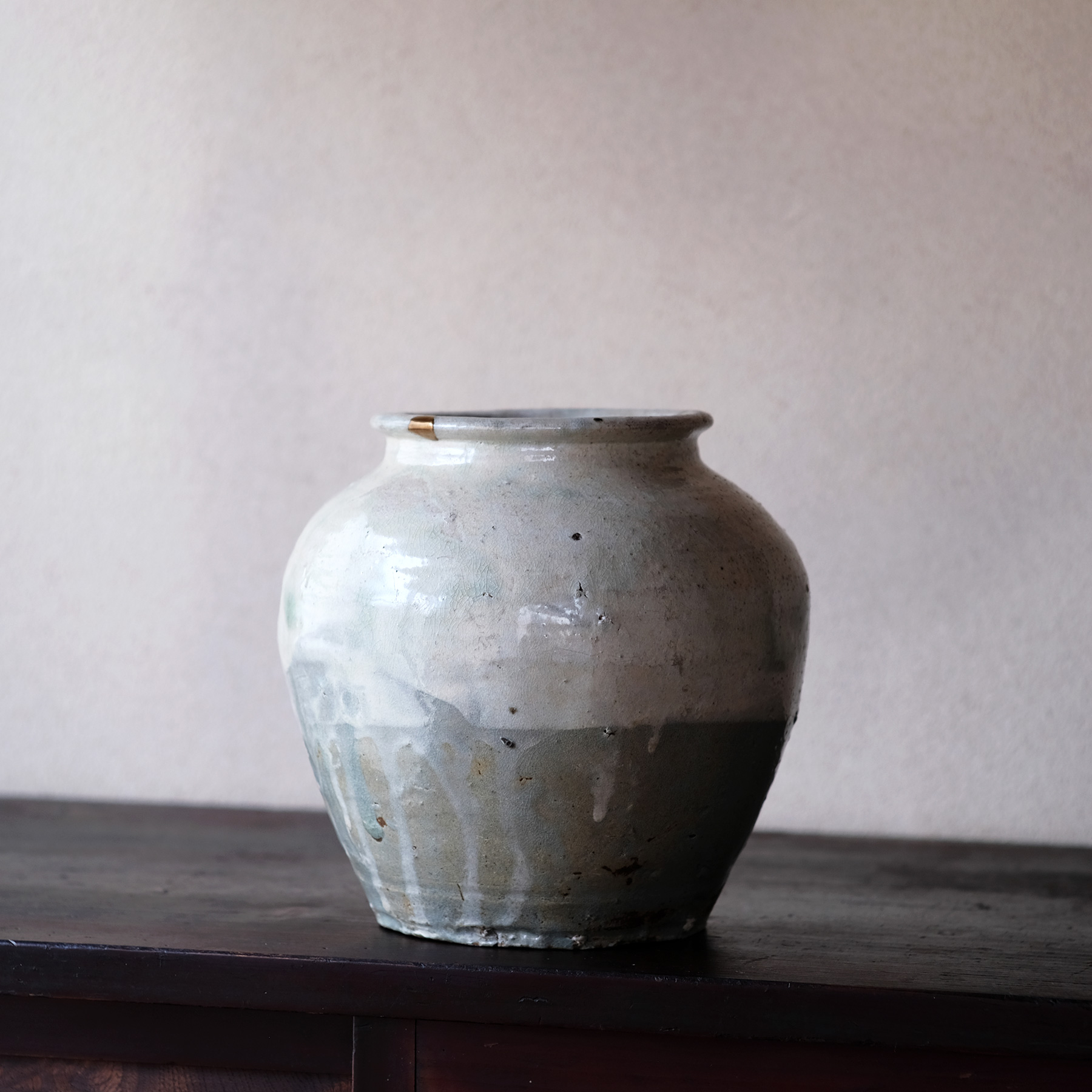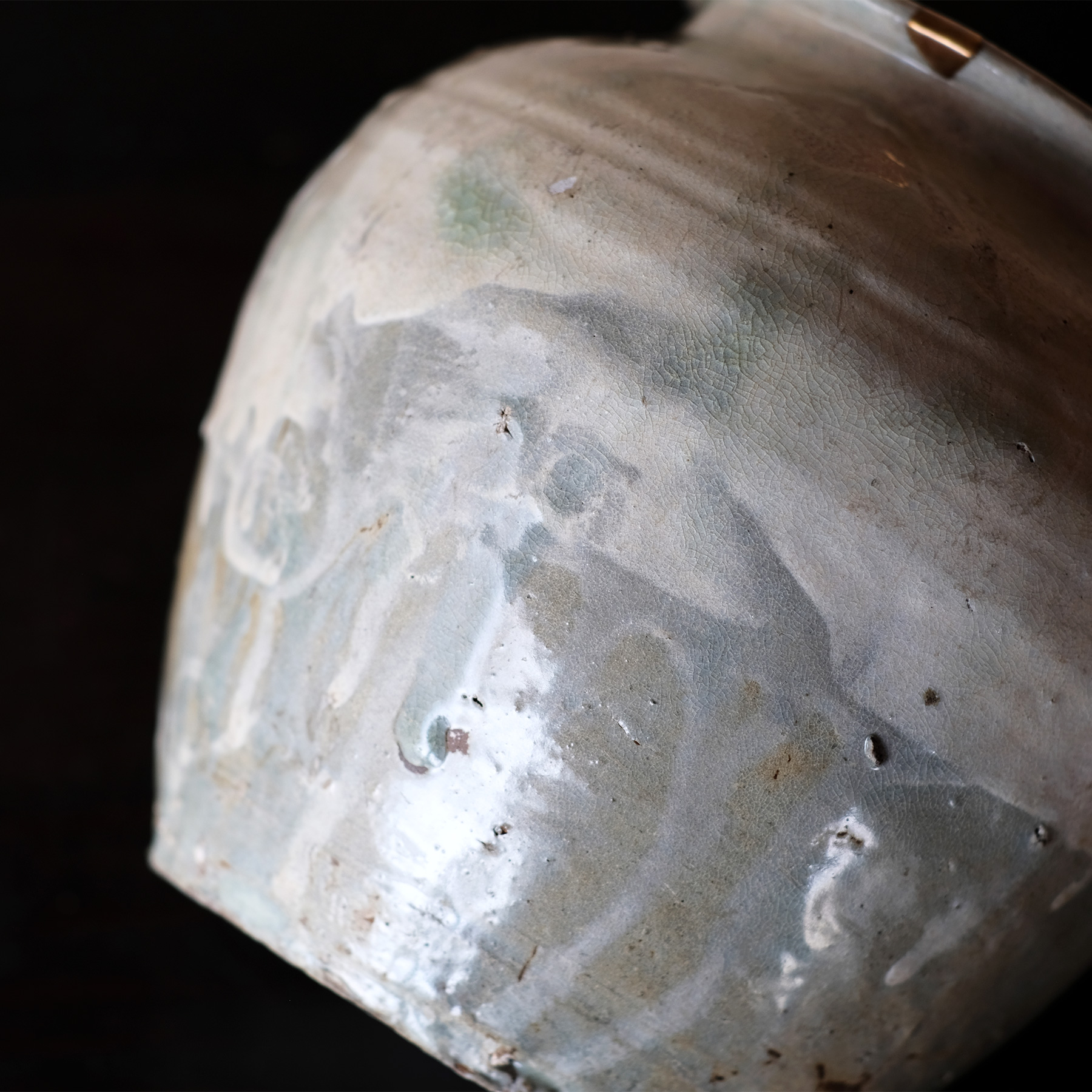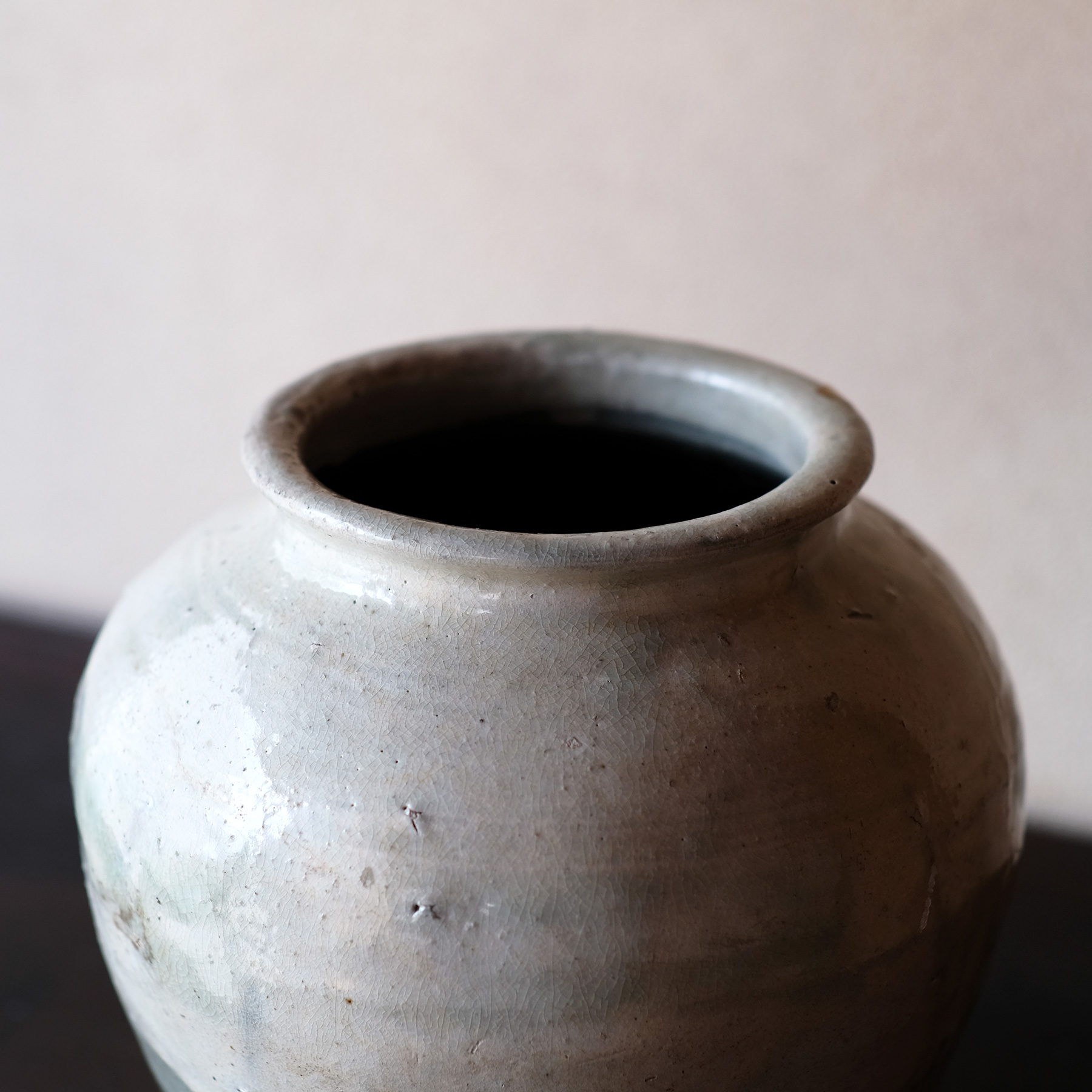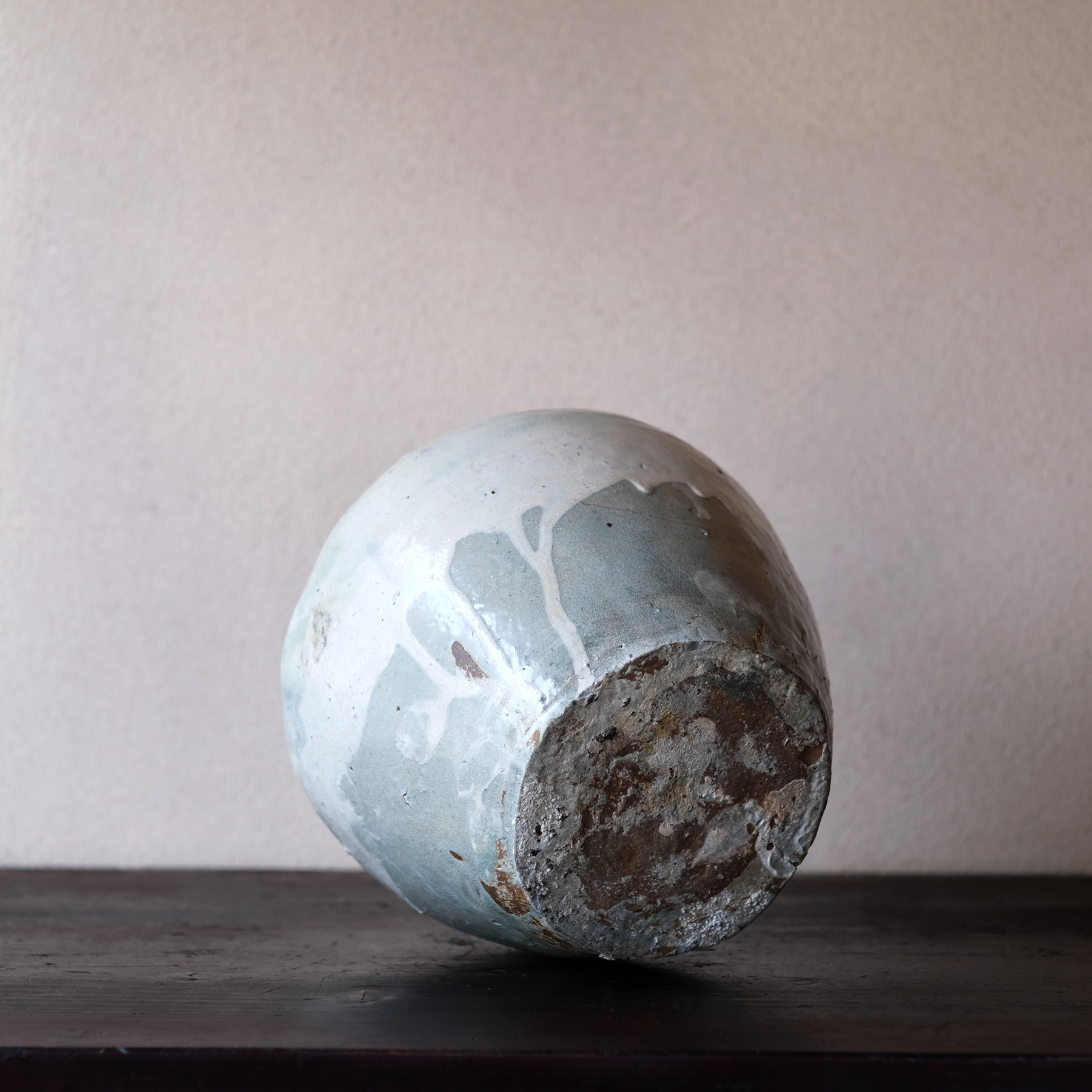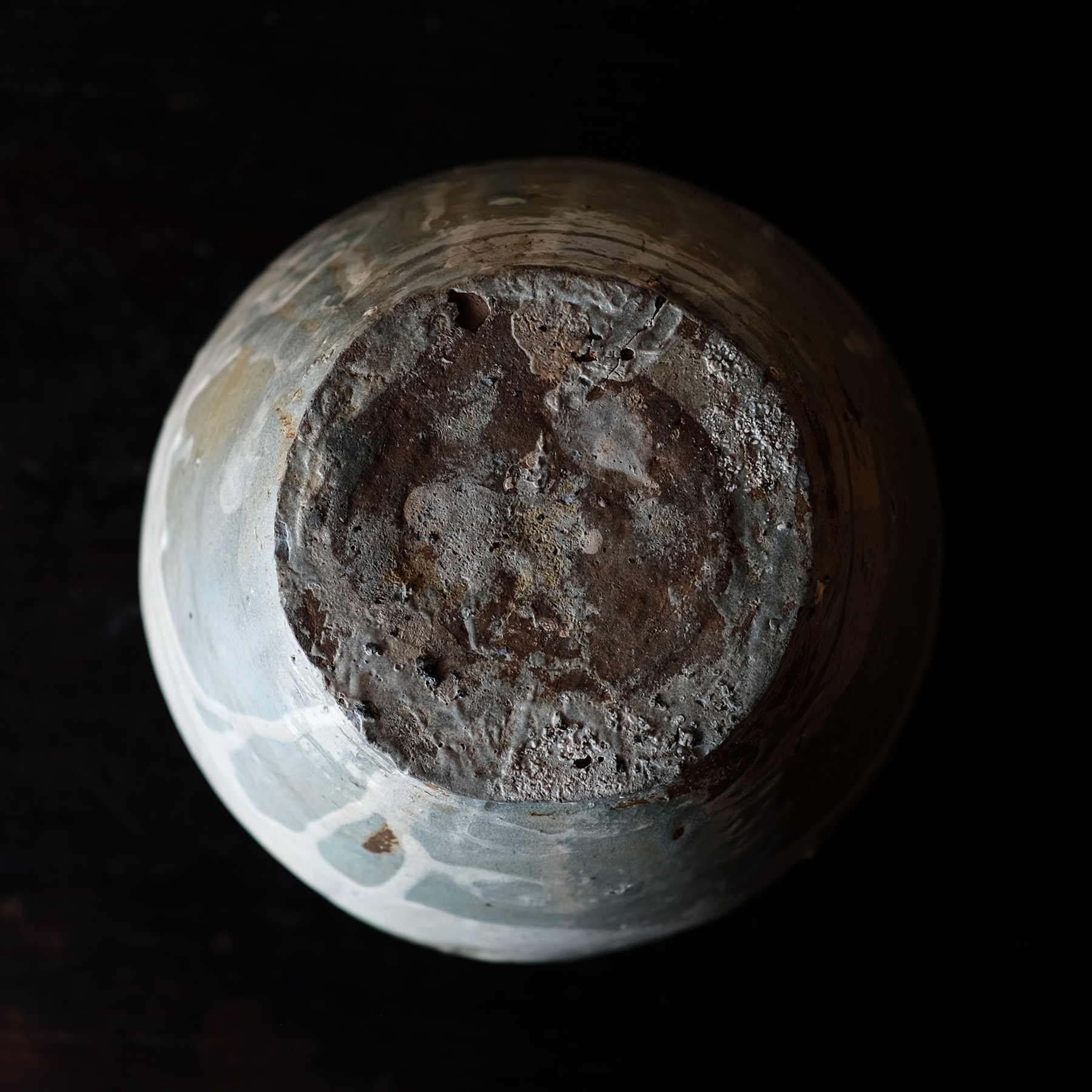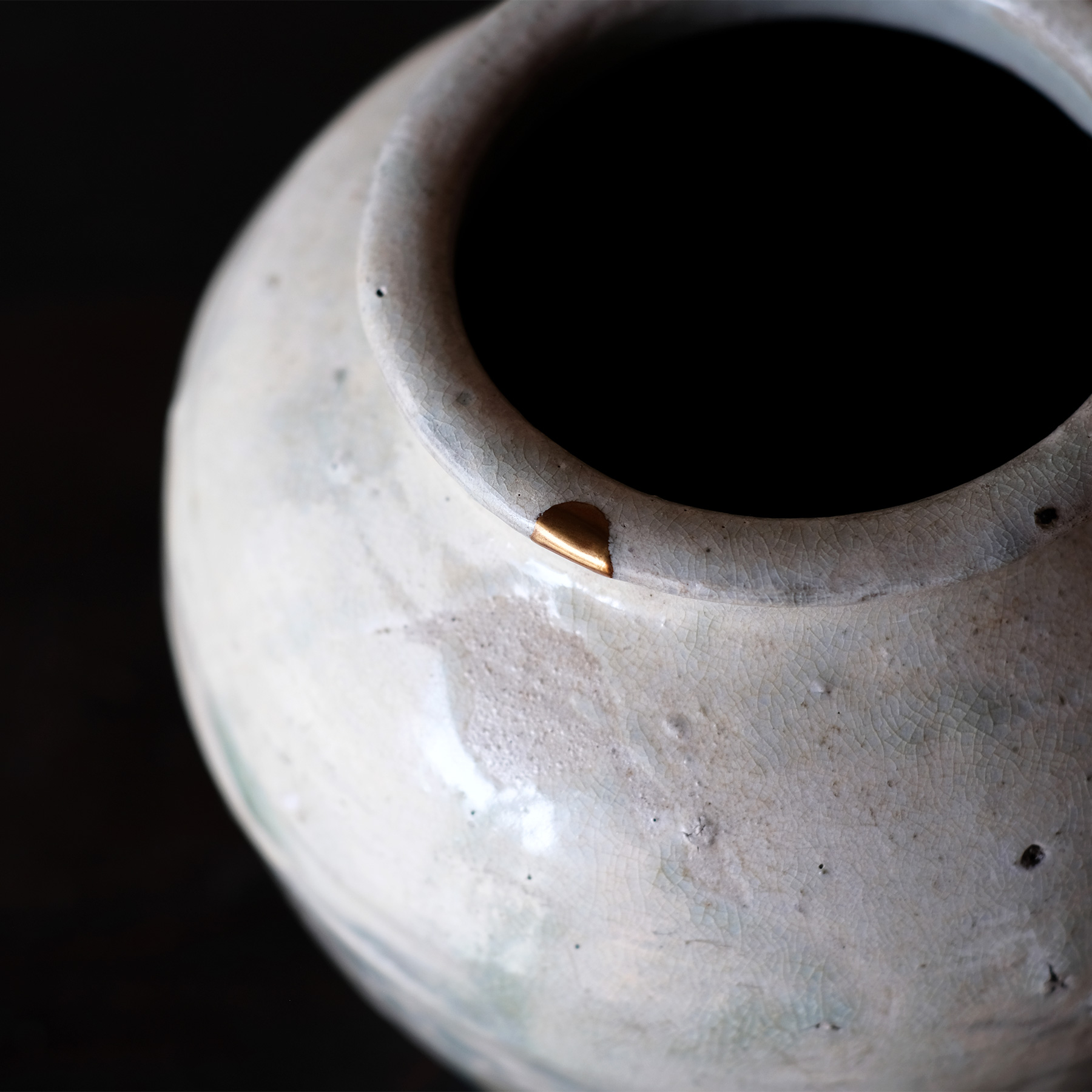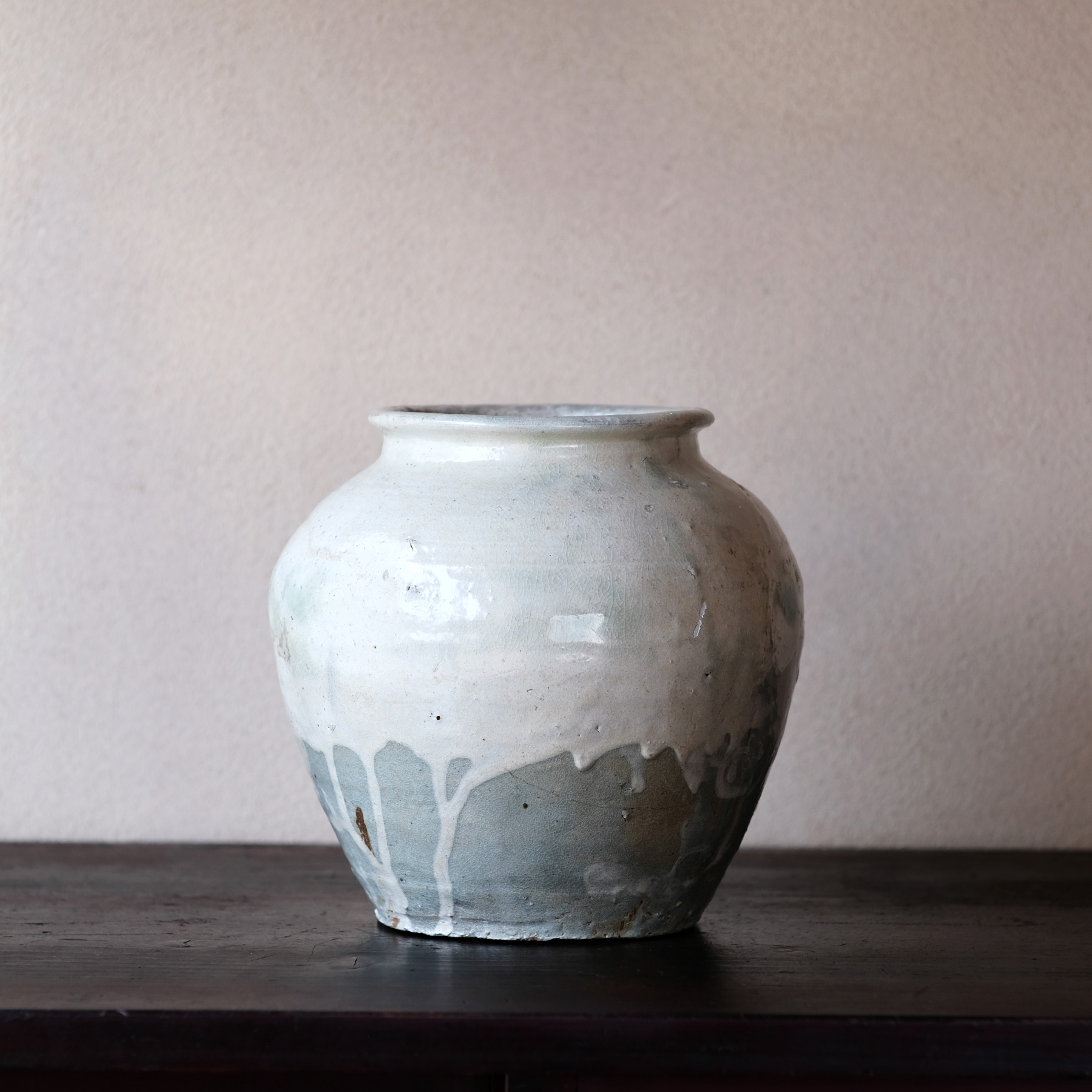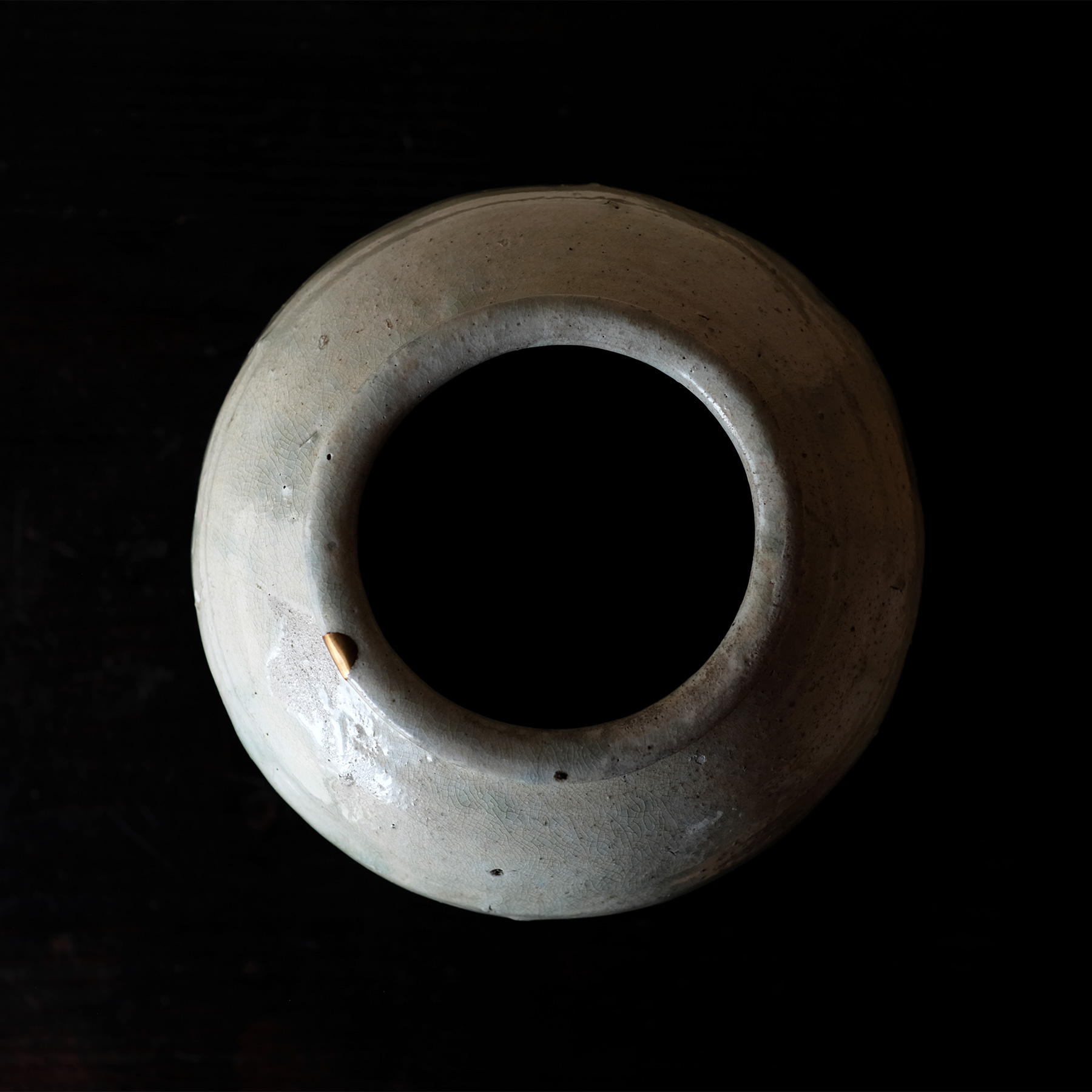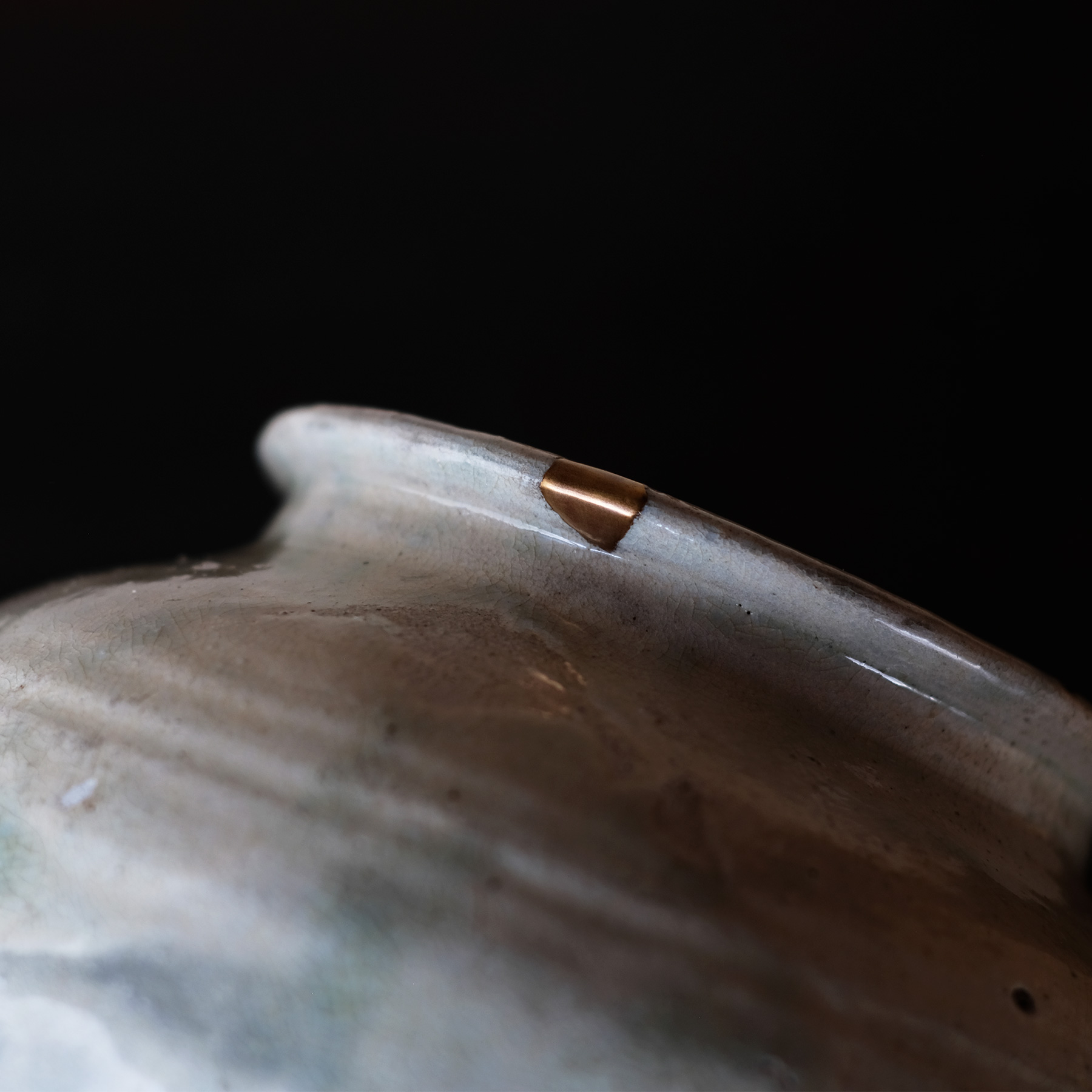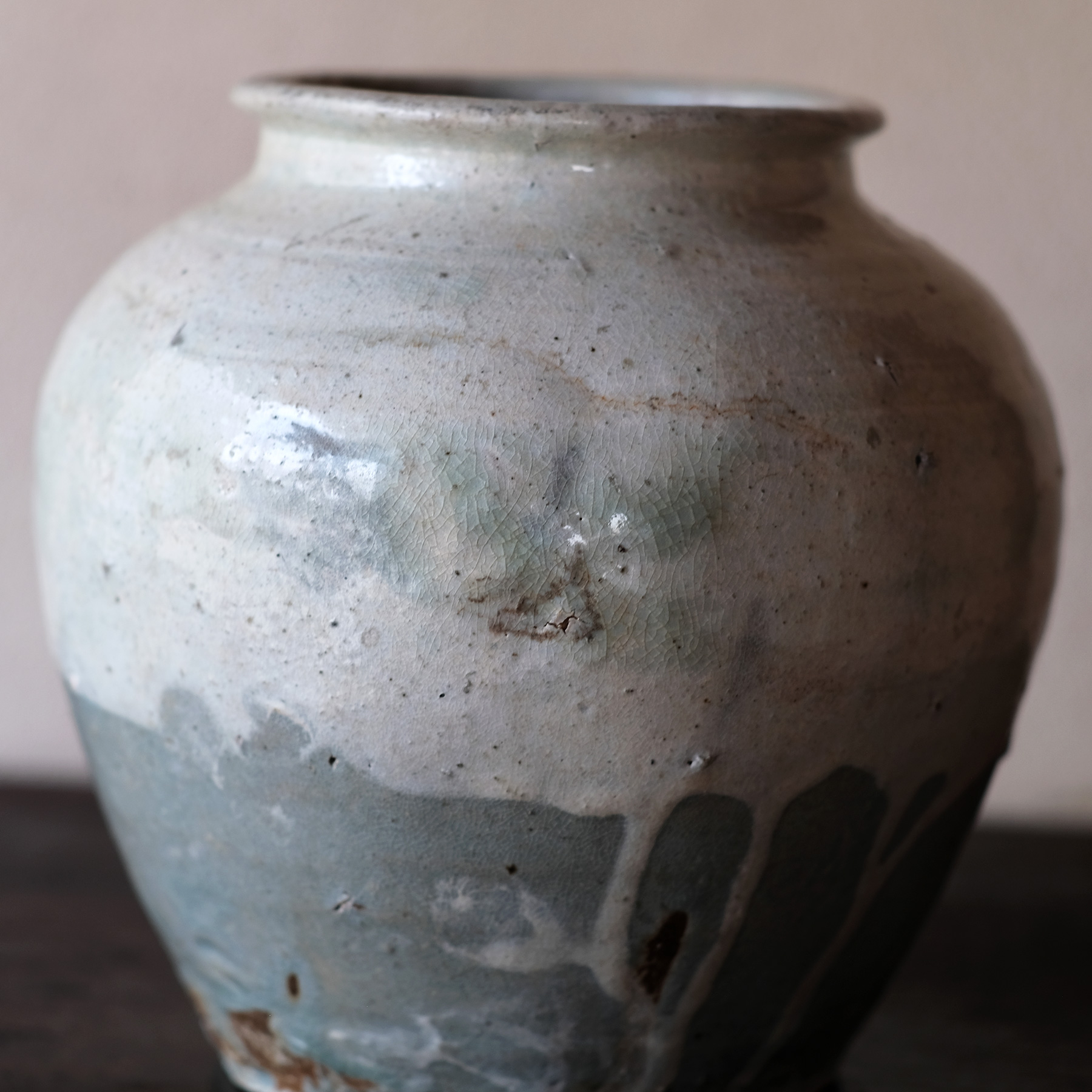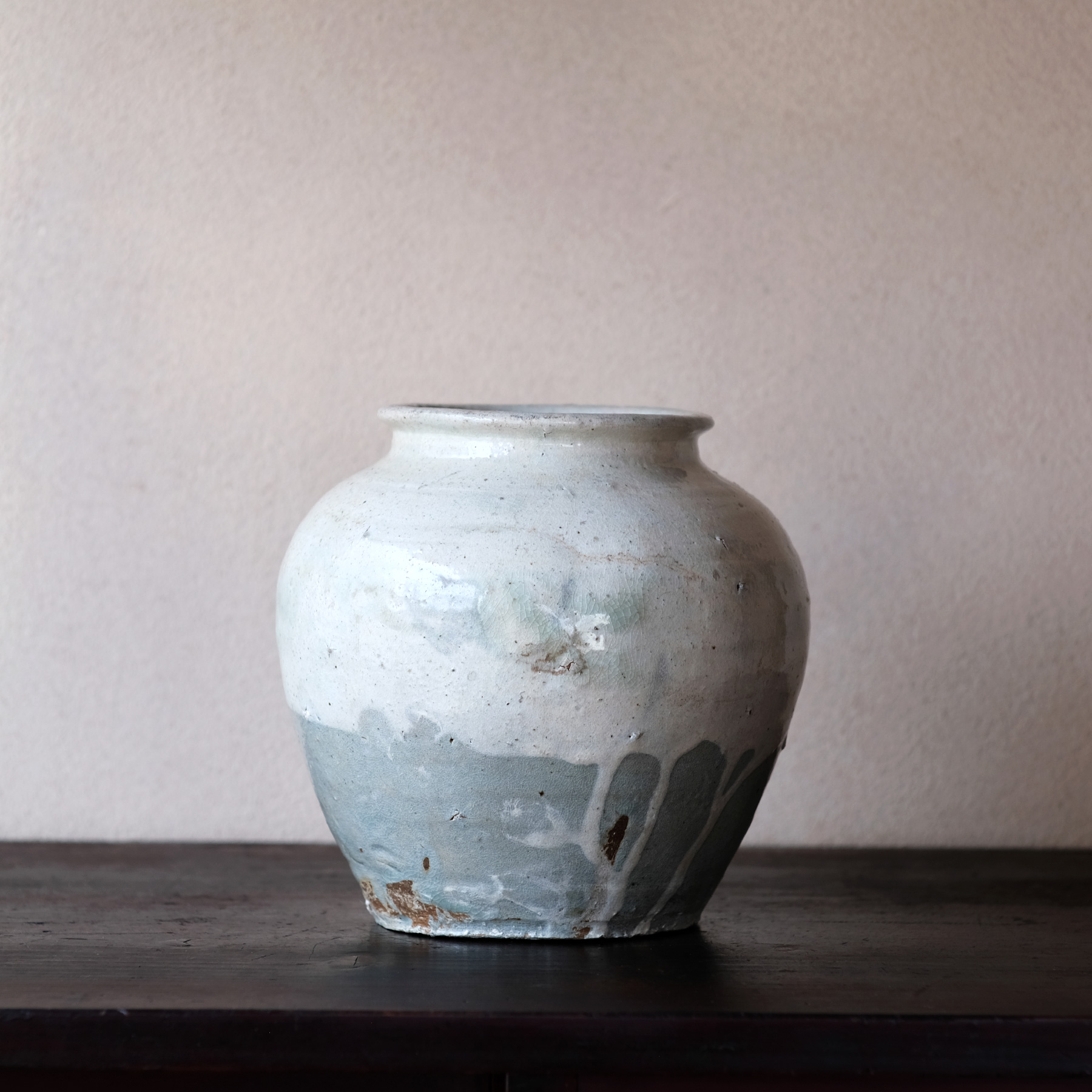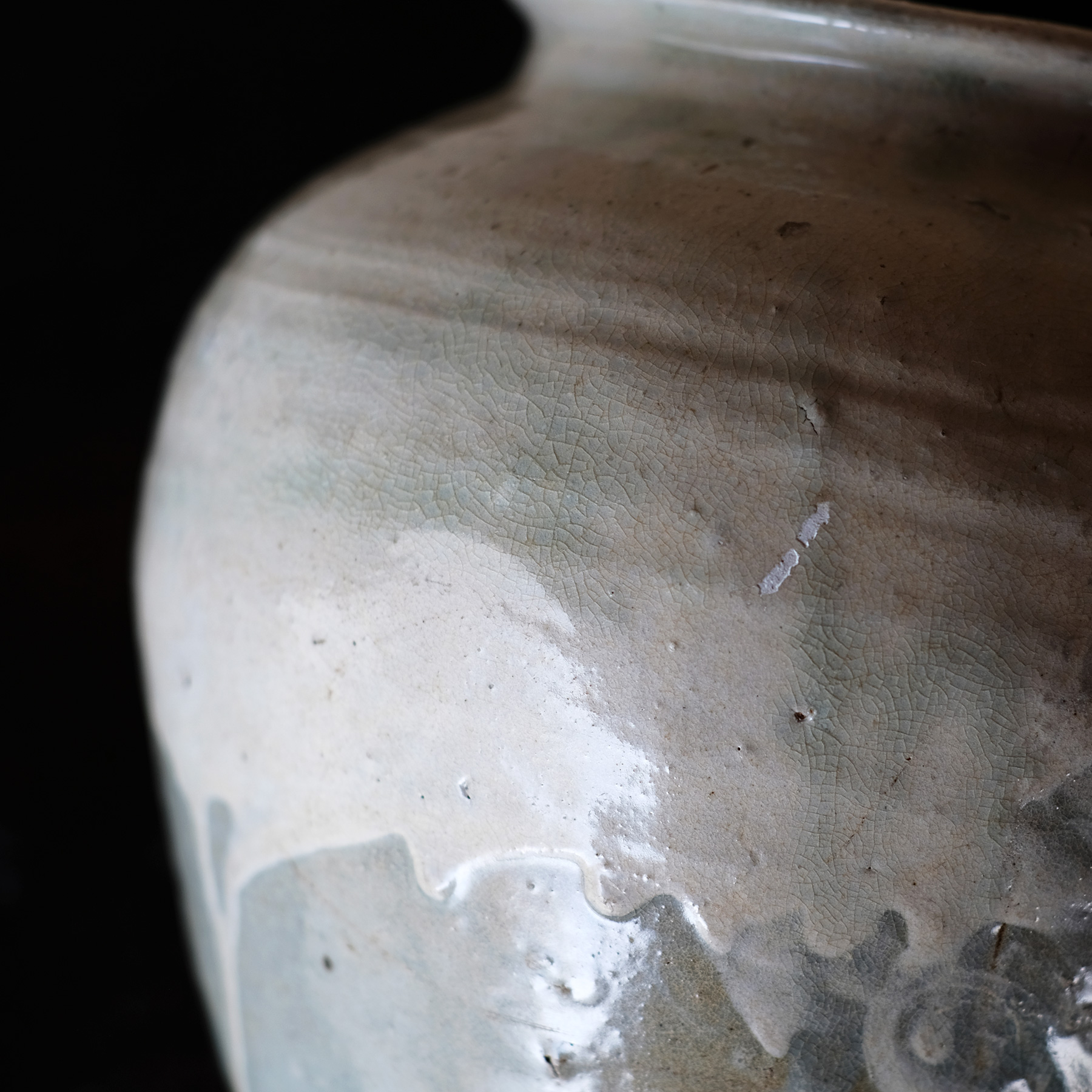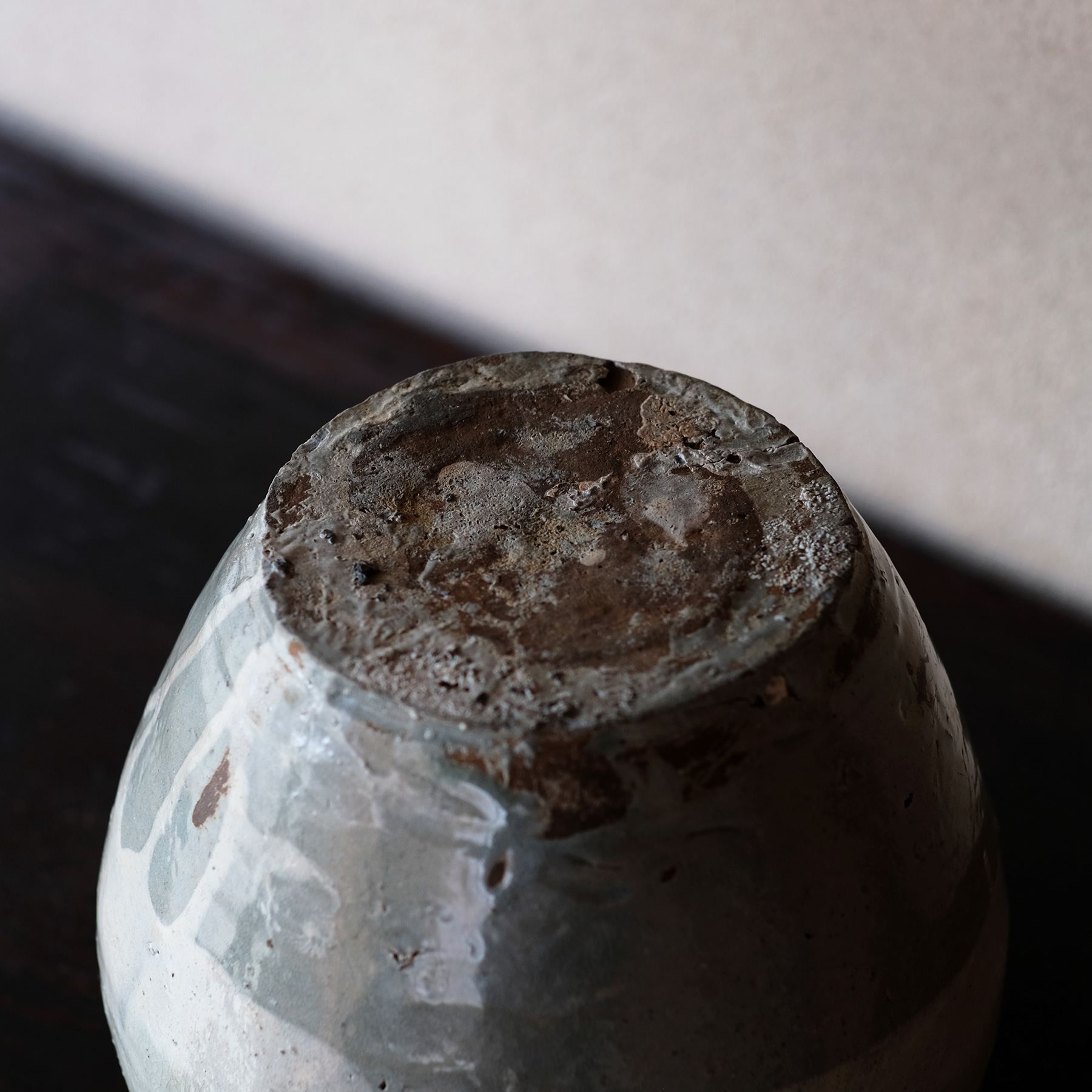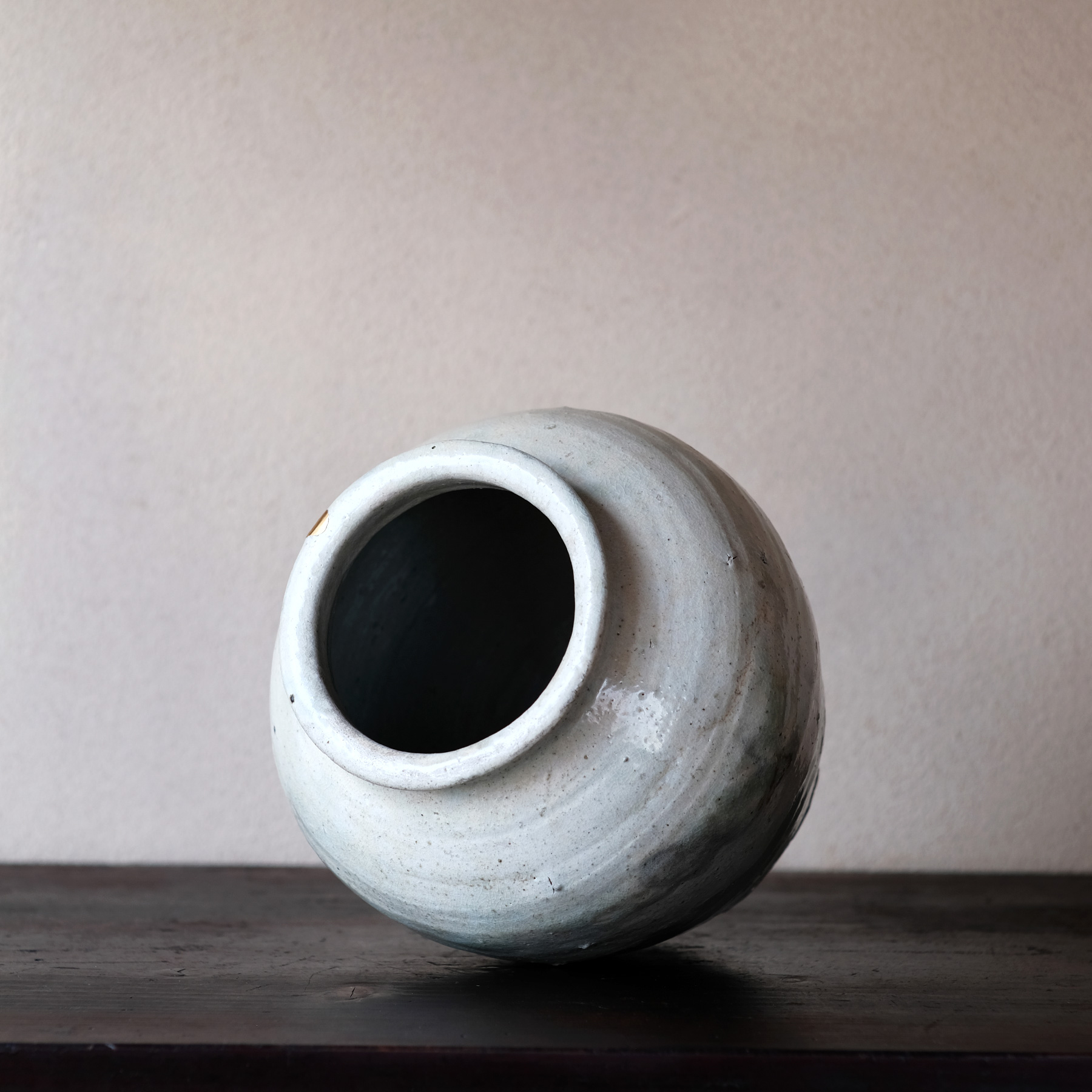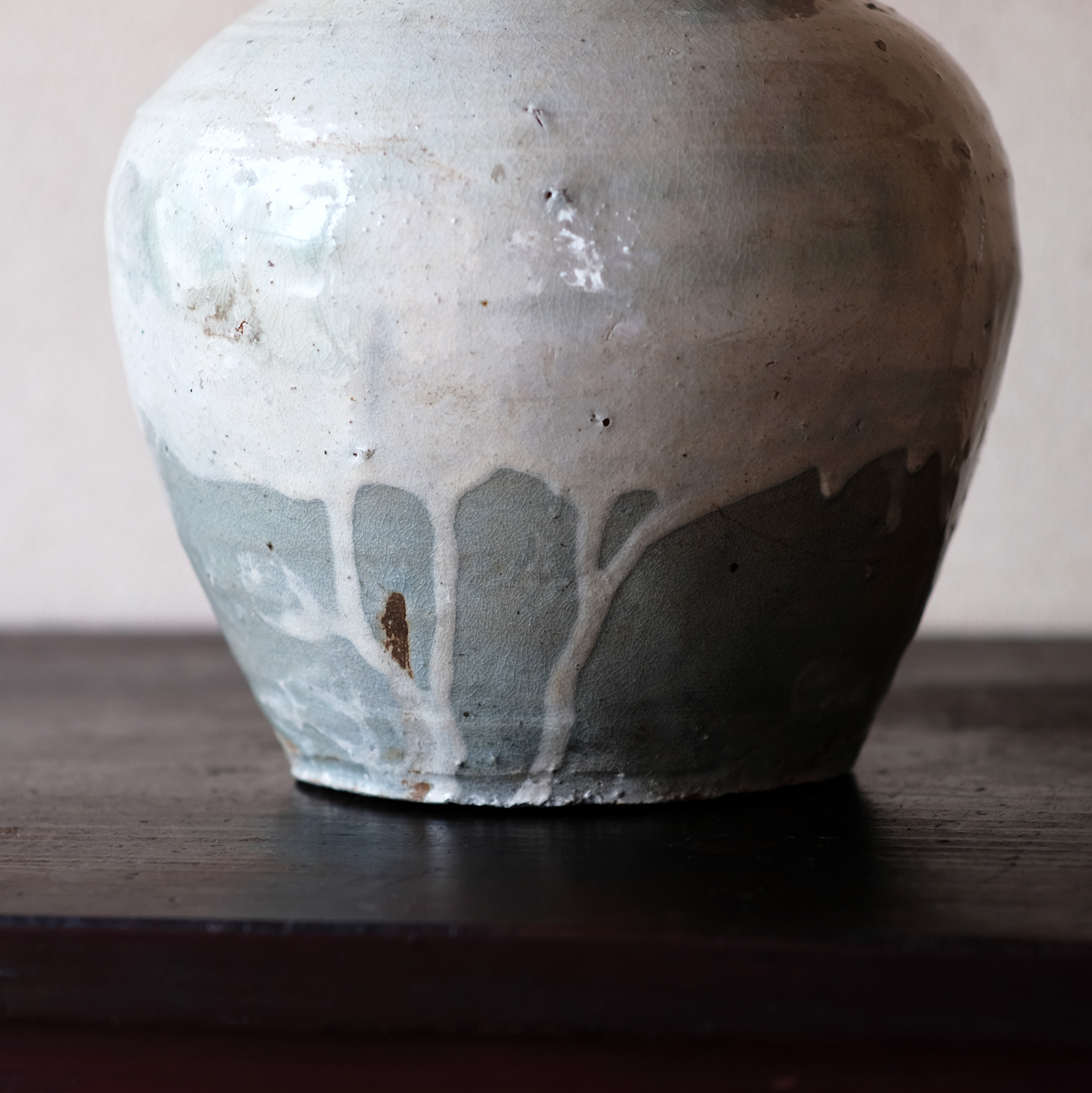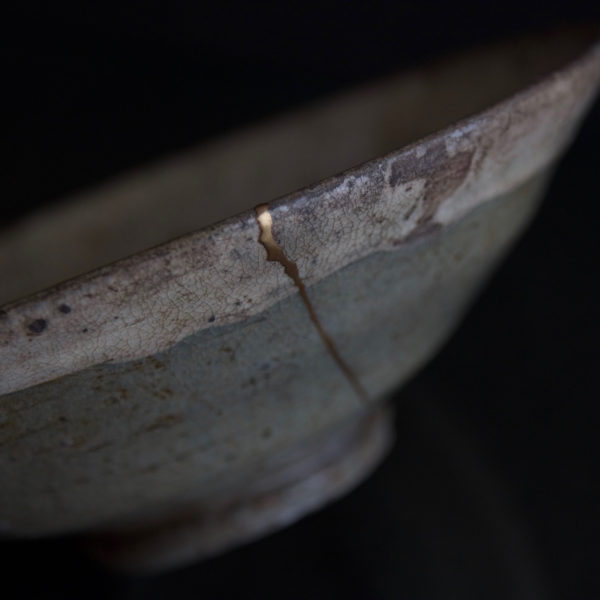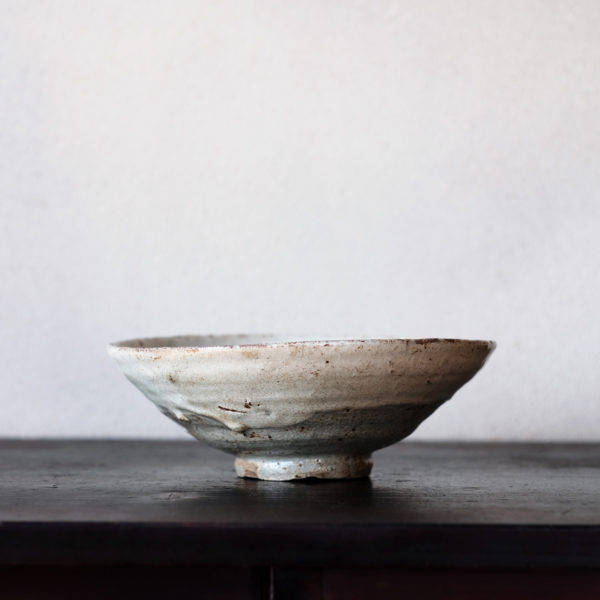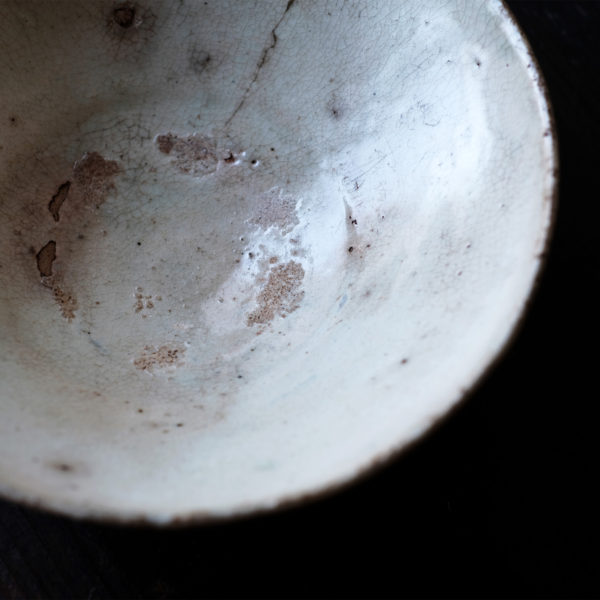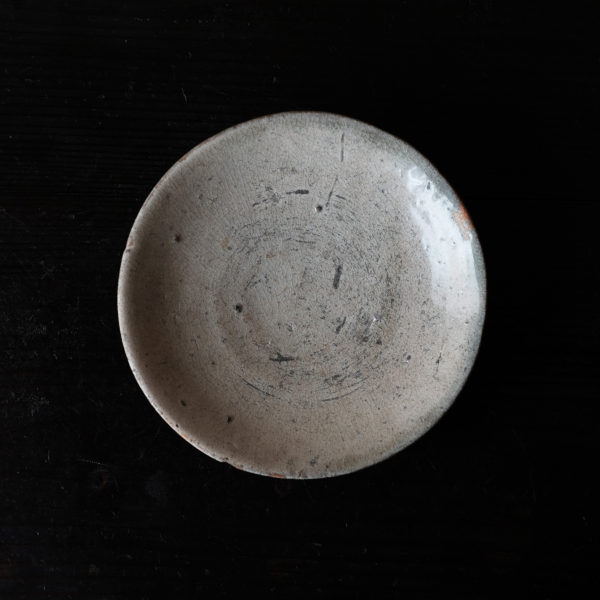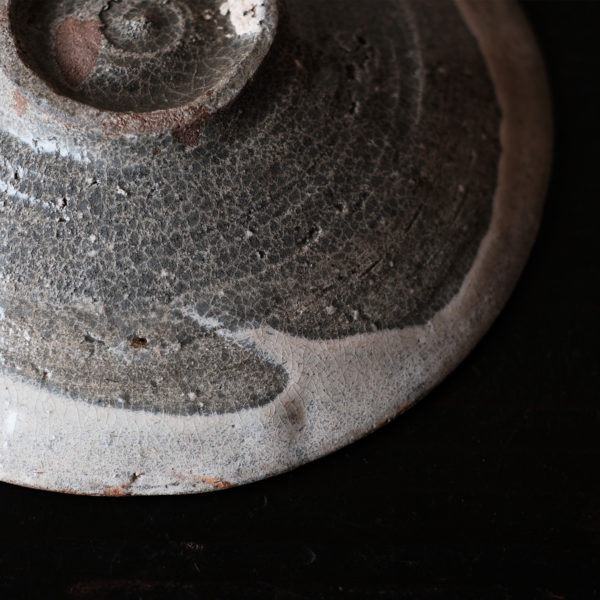Joseon Dynasty Buncheong Ware Muji-Hakeme Type Jar
ARCHIVEDA Buncheong ware jar, fired during the early Joseon dynasty, showcases a distinctive shape that sets it apart from the predominantly abacus-shaped jars commonly found within the Buncheong ware tradition. Unlike its counterparts, this jar gently narrows from the shoulder to the base, lending it a unique and captivating appearance.
This type of white slip-brushed design is known as “Muji-hakeme” in Japan. Interestingly, the dipping technique was applied, immersing the upper body in the slip rather than using brush strokes. Another name associated with this design is “Muan Kohiki,” indicating its origin in Muan-gun, situated in the western part of Jeollanam-do. However, potsherds have been discovered in other kiln sites, suggesting a wider production distribution. In Korea, the brush mark slip Buncheong style is referred to as “Guiyal” (brushing), while the white slip-covered variation is known as “Dumbeong” (dipping, plop).
Despite its status as an excavated piece, this jar displays a remarkable purity of whiteness, accompanied by beautiful glaze pools and streaking slip glazes that enhance its allure. Its elegant form not only lends itself to flower arrangements but also makes it an ideal object for aesthetic appreciation.
A chip on the mouth was expertly repaired using the traditional technique of Kintsugi. Aside from minor glaze flakings on the body, no notable defects are visible, further enhancing its overall quality.
- The description will be updated as our research progresses.
- Images may differ in color from the actual products.
- Please read "Terms" when purchasing.

